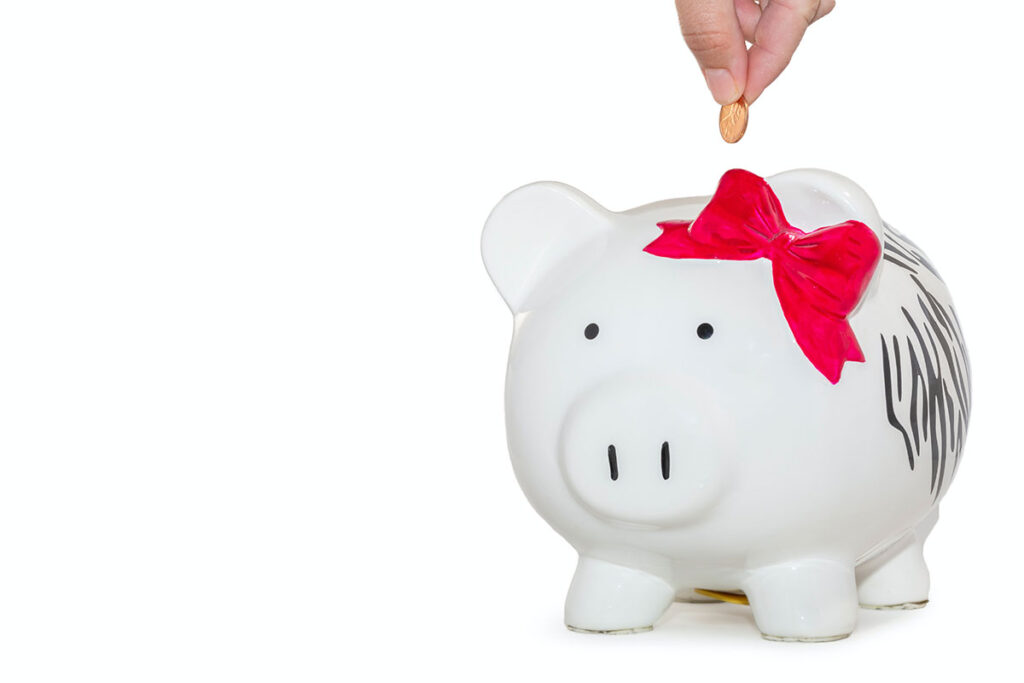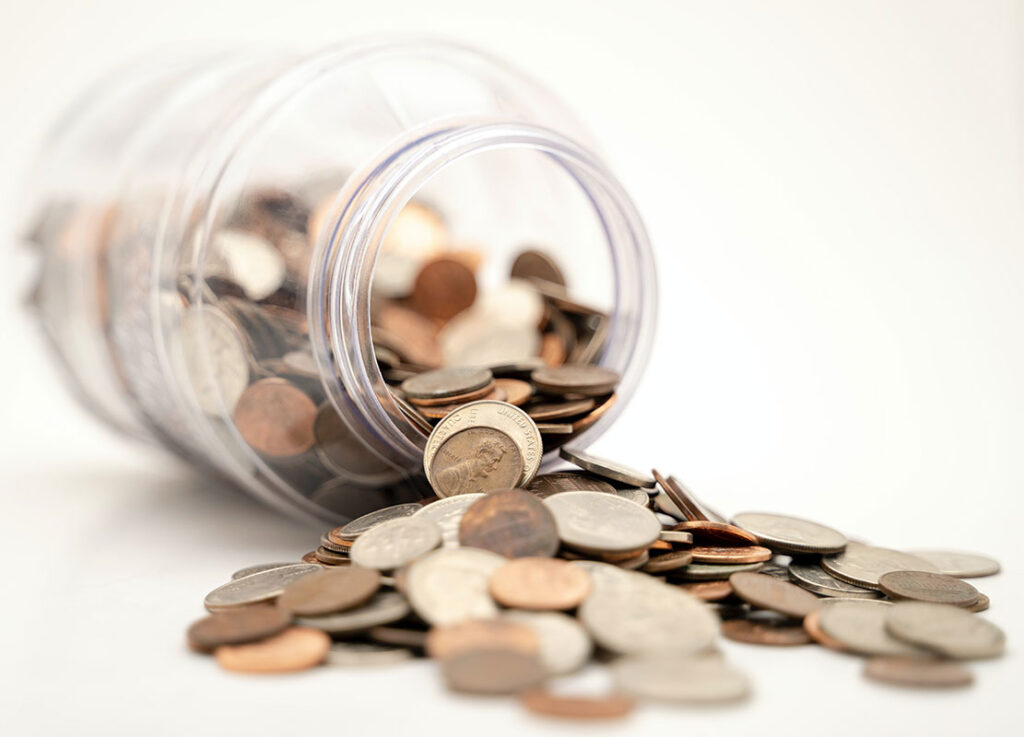Now that you have a checking account (and are taking it to the next level), it’s time to do what Gabe did and open a savings account – the second most common type of financial account. When he was considering a savings account, Gabe had questions like:
- Why do I need a savings account if I have a checking account?
- What are the benefits of a savings account?
- Should I have more than one savings account?
- Where should I open my savings account?
Let’s take a look at all of these questions and start you down your road to saving money along with Gabe.

Why did Gabe need both a checking account and a savings account?
The main answer to this question is “purpose.” Gabe knew that every dollar he has should have a purpose. Some of his dollars were for paying his monthly bills, some were for entertainment, some were for investing, and some were for his emergency fund. If all his dollars were in one account, it would be much more challenging for Gabe to remember which of his dollars are for which purpose.
Gabe knew that the money in his checking account should be for his regular expenses. This is the money he uses to pay his bills and conduct his everyday life.
Money in his savings account is not for that. It is usually for…you guessed it, savings. This is money that Gabe plans to invest or money that he has set aside for an emergency or unexpected, large expense. When his money is in a separate account, it is much less likely that he will confuse which dollar is for which purpose. If he kept everything in his checking account, Gabe knows it would be too easy to spend dollars on things for which they are not meant.
Since Gabe knows the money in his savings account is not to be spent, he is much less likely to spend it. Therefore, he is making it easier to save money, and that is a HUGE benefit for Gabe on his path to financial independence.
As Gabe’s savings account grows over time, he will be taking money out of the savings account and putting it into investments to grow his wealth. Those investments could be things like stocks or real estate. Or he could use the money to start a new business venture. These investments will provide him with better returns, but they should ONLY be long term investments. But before he can do any of that, he needs to begin saving money, and a savings account is where that happens. The job of the savings account is to keep Gabe’s money safe in the short term until he has enough to invest.

What are the benefits of a savings account?
- It is extremely easy to open a savings account.
- Most savings accounts don’t require a large initial deposit – some require as little as $25.
- A savings account will pay Gabe interest, which is when the bank pays him just for keeping his money in an account at their bank. A checking account usually does not pay any interest.
- If Gabe regularly uses his savings account to save more money, he will find himself reaching his financial goals much more quickly.
- By having money in a savings account, Gabe will feel more secure. Having money makes life easier, and when he knows that he has money set aside for an emergency or future investments, Gabe will feel more comfortable and protected.
- By putting money into his savings account regularly, Gabe will be accumulating funds to make investments for his future. In this way, his savings account is a launching pad for his investments.
- Gabe can access his account with his mobile device anytime, anywhere. He can also transfer funds between his savings account and his checking account with his bank’s mobile app.

Should Gabe have more than one savings account?
The short answer to this question is “yes.” We’ve been discussing the idea of purpose – knowing what each dollar is for. We have also been talking about saving money for investments but also saving money for an emergency fund. So it makes sense for Gabe to have one savings account to accumulate money for future investments and another for his emergency fund.
SAVINGS ACCOUNT #1 = EMERGENCY FUND
As we went over at the end of Post 12, an emergency fund is essential to have for unexpected expenses or emergencies. Everyone should have 6 months of expenses saved and put into their emergency fund. The good news is that once Gabe has that money saved and in his emergency fund savings account, he won’t have to add more unless he has to use some of it.
Gabe will just leave it alone unless he has…an emergency. The money just sits there for when he might need it. It’s a safety net for things that could go wrong, like losing his job, an expensive medical situation, if his car suddenly has a major engine problem, or the country gets shut down for a pandemic.

SAVINGS ACCOUNT #2 = FUTURE INVESTMENT FUND
Gabe’s first priority is to save money into his emergency fund until it is at that “6-months of expenses” level. Once he has done that, it’s time to turn his focus to this account.
This is the account where Gabe will put money that he plans to invest in the future. He may decide to invest in the stock market, in real estate, in a government bond, or some other opportunity. But before he can invest, he needs to save money, and this is where that money goes.
To maximize the potential of this account (which also maximizes his future), Gabe has set up automatic transfers from his checking account into this account. A bank representative helped him do this – he did it over the phone but it can also be done in person. Gabe knows this process is called “paying yourself first” and is a VITAL key to growing his wealth.
For example, let’s say that your paycheck is direct deposited (see Post 13 for more on direct deposits) into your checking account twice a month on the 5th and the 20th. You should then work with your bank representative to set up an automatic transfer from your checking account into your savings account (investment fund) a day or two after each payday. Try to make the transfer at least 10% of your average paycheck amount.
SAVINGS ACCOUNT #3 = LARGE FUTURE PURCHASE (optional)
Gabe’s plan is that after he has hisemergency fund fully funded and he is putting at least 10% of his income into his future investment fund, he will look at the possibility of a “large future purchase fund.”
Gabe has always wanted to travel to Italy and own a jet ski. This account will help him save for that expense while not taking money away from his future wealth. This savings account can be used to save for whatever major expenses his sights are set on.
If Gabe finds that he has some extra money in his checking account, he can move that money into this account (easy to do with a bank’s app or website) to start saving for that trip to Italy. By periodically putting money into this account, he is not allowing himself to confuse these dollars with other dollars and potentially cheating himself out of his future wealth. Gabe knows that using an account like this is a disciplined way to save and make big purchases.

How did Gabe choose where to open his savings account(s)?
The logical place to open your savings account is at the same bank that manages your checking account. But even though that may be the most straightforward way to do it, it’s likely not the best option.
Online banks are now the leader in savings account options because of how much interest they pay compared to the traditional “brick-and-mortar” banks. As of the writing of this blog post, brick-and-mortar banks are offering around 0.0% to 0.9% interest on a savings account. Online banks are around 1.35% to 1.75%. Those different interest rates may not seem like a big deal, but THEY ARE.
So I recommend that you use an online bank for your savings accounts. Here are Nerdwallet’s recommendations. You can also just Google “Best online savings accounts” and look over your options.
You will need to be 18 to open a savings account. If you are under 18, you will need your parent’s help. They will need to have their name on the account just as they did for your checking account. You may want to chat with one of the online bank’s representatives to see how to best set up a “joint” savings account with your parents for you to use.
One other thing you should look for is the minimum balance requirement for a savings account to avoid any fees for having a low balance. Most online banks have low minimums, but you should still check it out.

Leave a Reply